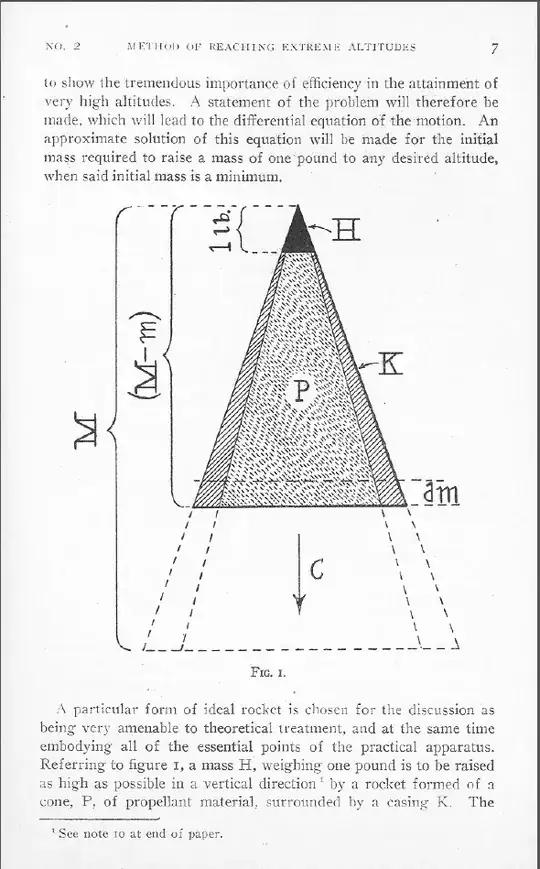The answer is right there in your own math.
You derived that the delta V that results from using the rocket as a single stage rocket is
$$\Delta V_{\text{single stage}} =
v_{ex}\ln\Bigl(\frac{M}{M-(m_{fa}+m_{fb})}\Bigr)$$
while the delta V from using the rocket as a two stage rocket is
$$\Delta V_{\text{two stage}} =
v_{ex}
\Biggl(
\ln\Bigl(\frac{M}{M-m_{fa}}\Bigr)
+\ln\Bigl(\frac{M-(m_{fa}+m_a)}{M-(m_{fa}+m_a+m_{fb})}\Bigr)\Biggr)$$
So the problem at hand is to determine the conditions needed to make $\Delta V_{\text{two stage}} > \Delta V_{\text{single stage}}$.
First, let's rewrite the two stage result using the fact that $\ln a + \ln b = \ln(ab)$:
$$\Delta V_{\text{two stage}} =
v_{ex}
\ln\Bigl(\frac{M}{M-m_{fa}}\frac{M-(m_{fa}+m_a)}{M-(m_{fa}+m_a+m_{fb})}\Bigr)$$
Since the natural logarithm is monotonically increasing function, the condition needed is that
$$\frac{M}{M-m_{fa}}\frac{M-(m_{fa}+m_a)}{M-(m_{fa}+m_a+m_{fb})} >
\frac{M}{M-(m_{fa}+m_{fb})}$$
Clearing the denominators yields
$$M(M-(m_{fa}+m_a))\;(M-(m_{fa}+m_{fb})) >
M(M-m_{fa})\;(M-(m_{fa}+m_a+m_{fb}))$$
This nicely reduces to $$m_a m_{fb} > 0$$
In other words, given a rocket designed as a two stage rocket, it's always better to use that rocket as a two stage rocket than as a single stage rocket.
This does not quite mean that it's better to build a two stage rocket than a single stage rocket. If it did, the same logic would dictate that a hundred stage rocket would be better than a ten stage rocket, and so on. There are penalties in building that hundred stage rocket (and in a two stage rocket). A multi-stage rocket has extra engines, extra fuel tanks, and extra structure, one set per extra stage. That's extra mass, and that extra mass means the lower stages also need extra structure to support that extra mass in the upper stages. Each additional stage also introduces extra places where things can go wrong. At some point, dividing a vehicle into ever more stages becomes counterproductive.
In most cases, that break even point is a two or three stage launch vehicle, possibly carrying a payload that is itself a rocket. (A single stage rocket that can carry a reasonable sized payload to orbit is beyond the capability of currently available engineering, physics, and chemistry.) The most complex vehicle ever built was the rocket that brought humans to and back from the Moon, which comprised eight stages in total:
- S-IC first stage, 2,300,000 kg gross mass, 131,000 kg empty mass.
- S-II second stage, 480,000 kg gross mass, 36,000 kg empty mass.
- S-IVB third stage, 120,800 kg gross mass, 10,400 kg empty mass.
- Launch escape system (thankfully never used for its intended purpose), 4,200 kg gross mass.
- Service module, 24,500 kg gross mass, 6,100 kg empty mass.
- Lunar descent stage, 10,300 kg gross mass, 2,100 kg empty mass.
- Lunar ascent stage, 4,547 kg gross mass, 2,213 empty mass.
- Command module, 5,560 kg gross mass, including 120 kg fuel.
